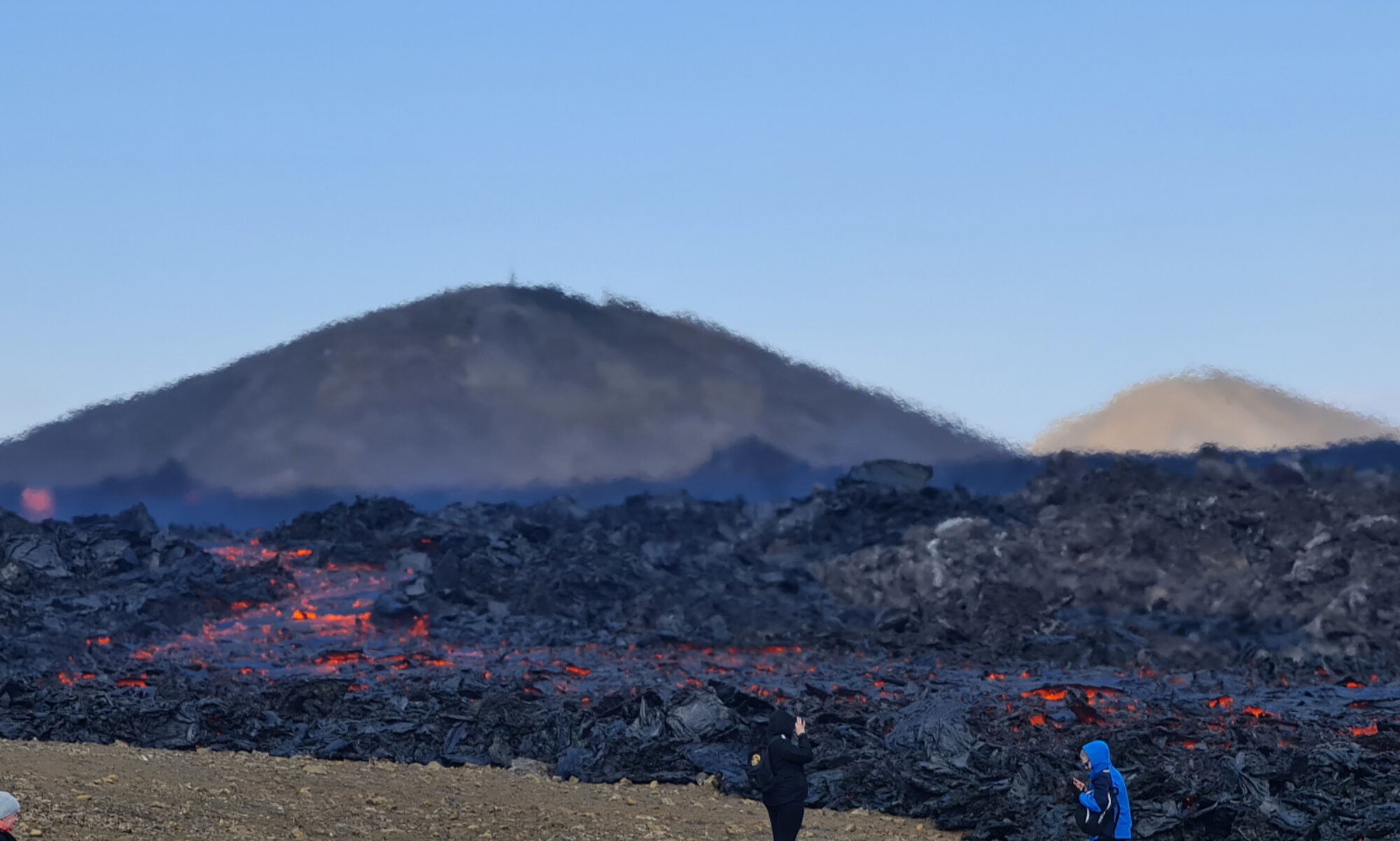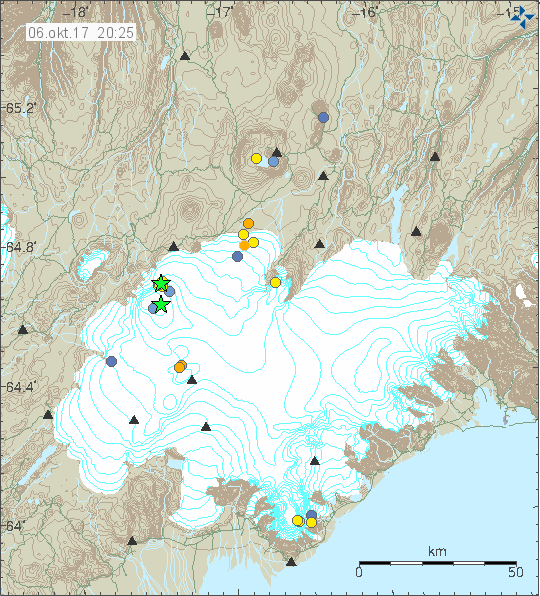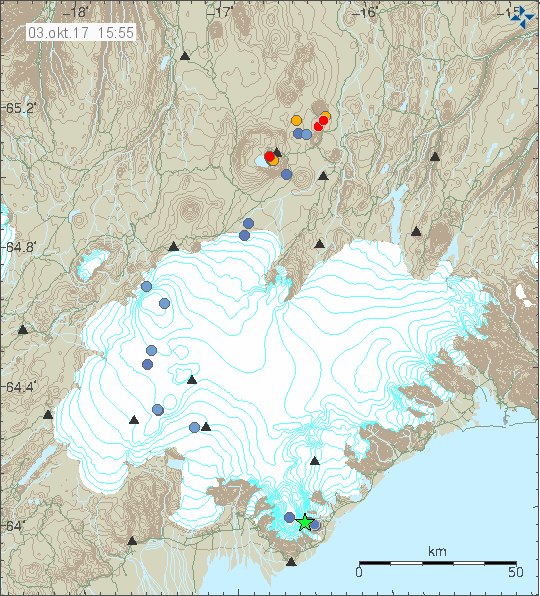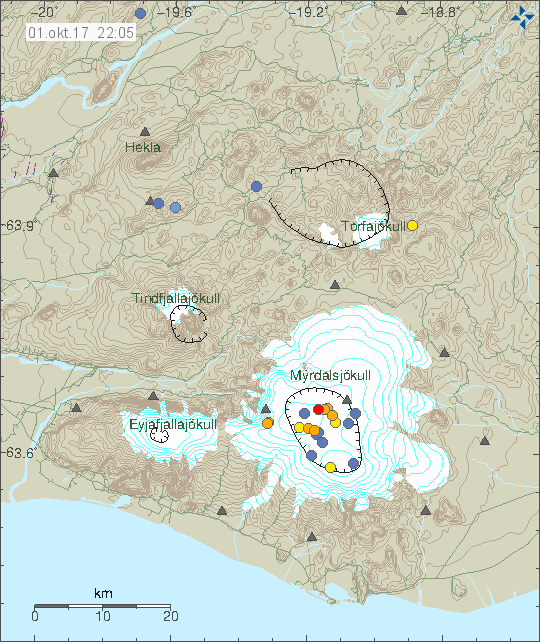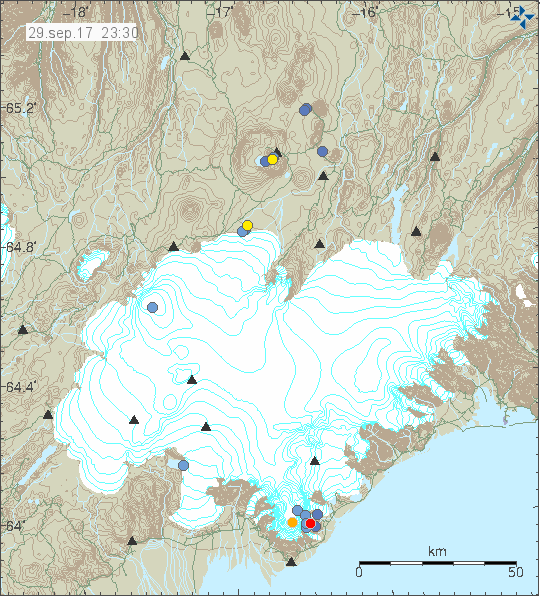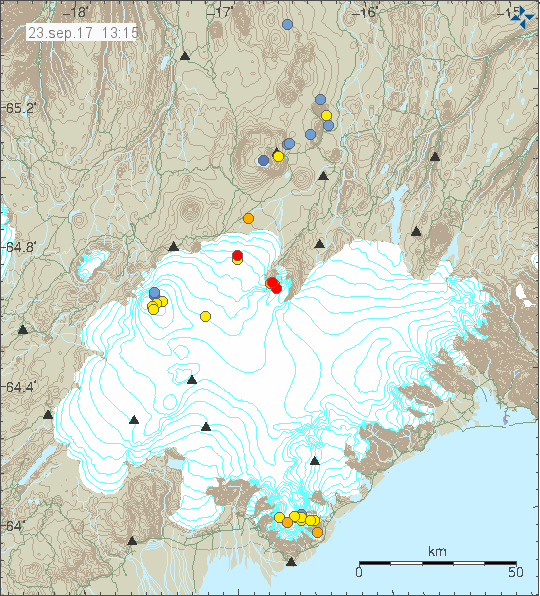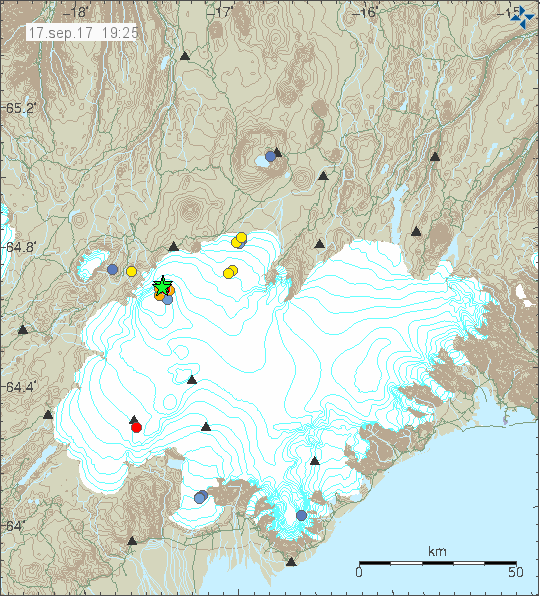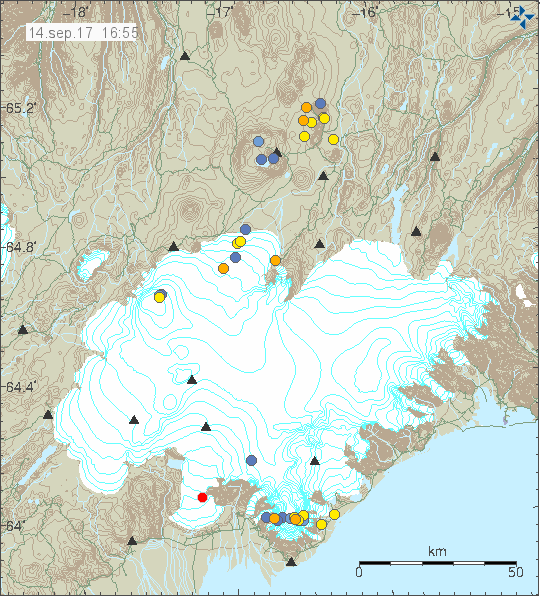On Friday 13 of October 2017 there was an earthquake activity in Bárðarbunga volcano. Largest earthquake in this activity had the magnitude of 3,1. Earlier earthquake had the magnitude of 2,9.
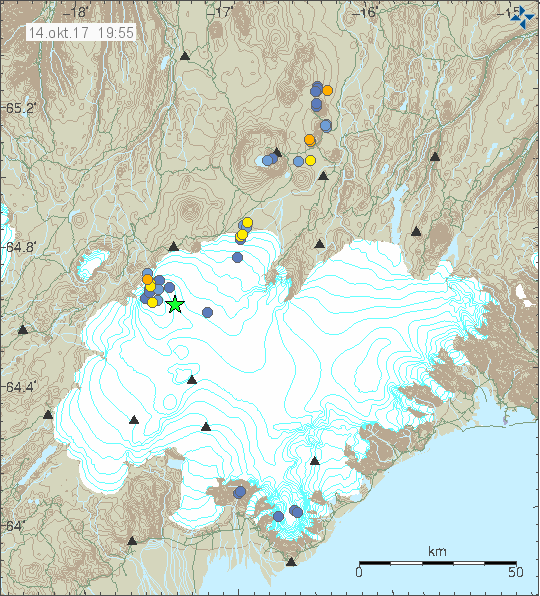
The earthquake activity in Bárðarbunga volcano. Copyright of this image belongs to Icelandic Met Office.
This latest earthquake is at an interesting location. This earthquake happens close to or inside the hydrothermal area in the Bárðarbunga volcano caldera rim. This area has not seen a lot of earthquake activity in recent months. Magma at this location is at shallow depth as is shown by the hydrothermal activity. Geologists are estimating that magma is at around 1 km depth at the hydrothermal location. This hydrothermal vents have melted hundreds of meters of glacier already due to how energetic they are. The magnitude 2,9 earthquake took place in the normal north-east place in the Bárðarbunga volcano caldera rim. There is also a interesting cluster of earthquakes in the north part of the caldera happening in last few hours.
At the moment there isn’t anything that suggest that an eruption is imminent in Bárðarbunga volcano.
Donations
Please remember to support my work with donations. Thanks for the support. 🙂
